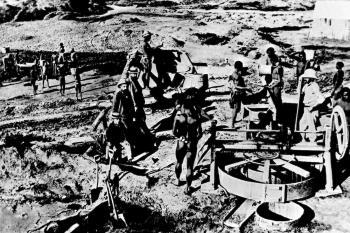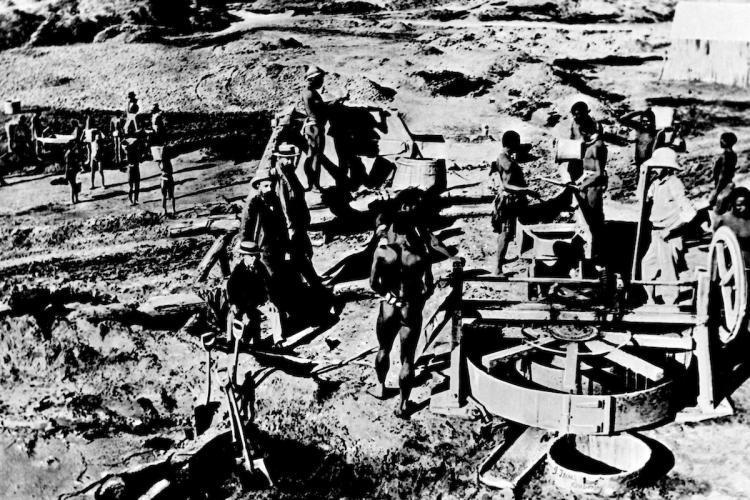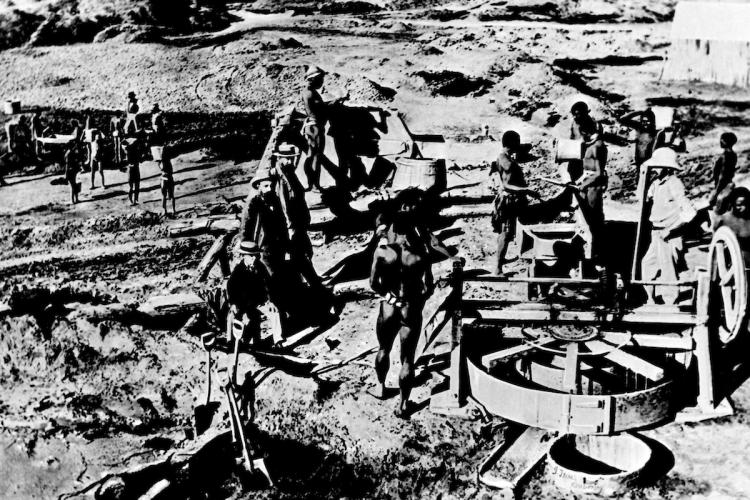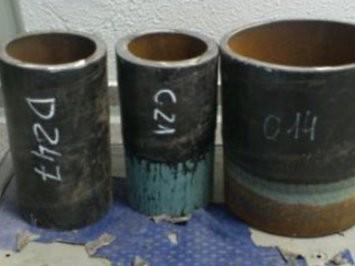After the discovery of diamonds in Eastern Zimbabwe in 2008, local villagers were forced to work in the mines. Since then, they have faced miserable lives of torture, rape, and harassment from soldiers, according to a new report released by Human Rights Watch called “Delibarate Chaos.”
After diamonds were discovered in the fields of Marange, Zimbabwe’s government deployed military and police to seize control over the area, killing an estimated 200 people in violent crackdown, says HRW.
According to the report, the soldiers have been using beatings and other forms of violence to force locals to work in the fields, where the concentration of diamonds is one of the highest of the world.
“In February alone, three different groups of soldiers forced me, together with
several other villagers, to dig for diamonds and hand them over to the
soldiers. Soldiers with guns guard us as we dig,” one villager told a HRW investigator.
Workers as young as 11 years old were forced to work in the fields, while those who refuse to cooperate are tortured.
Diamond smuggling and corruption also prevail in Zimbabwe, which is detailed in another HRW report from 2009.
“Individual soldiers are implicated, senior government officials are implicated, and workers of the two private companies operating in Marange are implicated. Our natural resources in Marange are being looted on a massive scale daily,” an unnamed Zimbabwe’s Parliament member told the human right watchdog.
The new HRW report, also warns that more than 4,000 families from the village in the diamond mining area will be forcibly moved to another location, which might be in violation of international standards on forced relocation.
HRW also urged the international community to suspend Zimbabwe from the Kimberley Process Certification Scheme (KPCS), which was established by the United Nations with the intention to halt the trade of diamonds used to finance local war conflicts.
Comprised of governments, members of the diamond industry, and civil groups, KPCS also tries to prevent so-called “blood diamonds” from entering the mainstream market.
The Kimberlay Process suspended export of Zimbabwean diamonds in November last year.
Members of the industry regulator met in Tel Aviv last week, but their chairman Boaz Hirsch announced that they could not reach consensus whether to lift the ban on Zimbabwe diamonds. The next meeting is scheduled in Russia next month.
Zimbabwe’s government announced on Wednesday that they plan to sell their diamond stockpile worth around $1.7 billion without waiting for approval from the Kimberlay Process.
After diamonds were discovered in the fields of Marange, Zimbabwe’s government deployed military and police to seize control over the area, killing an estimated 200 people in violent crackdown, says HRW.
According to the report, the soldiers have been using beatings and other forms of violence to force locals to work in the fields, where the concentration of diamonds is one of the highest of the world.
“In February alone, three different groups of soldiers forced me, together with
several other villagers, to dig for diamonds and hand them over to the
soldiers. Soldiers with guns guard us as we dig,” one villager told a HRW investigator.
Workers as young as 11 years old were forced to work in the fields, while those who refuse to cooperate are tortured.
Diamond smuggling and corruption also prevail in Zimbabwe, which is detailed in another HRW report from 2009.
“Individual soldiers are implicated, senior government officials are implicated, and workers of the two private companies operating in Marange are implicated. Our natural resources in Marange are being looted on a massive scale daily,” an unnamed Zimbabwe’s Parliament member told the human right watchdog.
The new HRW report, also warns that more than 4,000 families from the village in the diamond mining area will be forcibly moved to another location, which might be in violation of international standards on forced relocation.
HRW also urged the international community to suspend Zimbabwe from the Kimberley Process Certification Scheme (KPCS), which was established by the United Nations with the intention to halt the trade of diamonds used to finance local war conflicts.
Comprised of governments, members of the diamond industry, and civil groups, KPCS also tries to prevent so-called “blood diamonds” from entering the mainstream market.
The Kimberlay Process suspended export of Zimbabwean diamonds in November last year.
Members of the industry regulator met in Tel Aviv last week, but their chairman Boaz Hirsch announced that they could not reach consensus whether to lift the ban on Zimbabwe diamonds. The next meeting is scheduled in Russia next month.
Zimbabwe’s government announced on Wednesday that they plan to sell their diamond stockpile worth around $1.7 billion without waiting for approval from the Kimberlay Process.







Friends Read Free